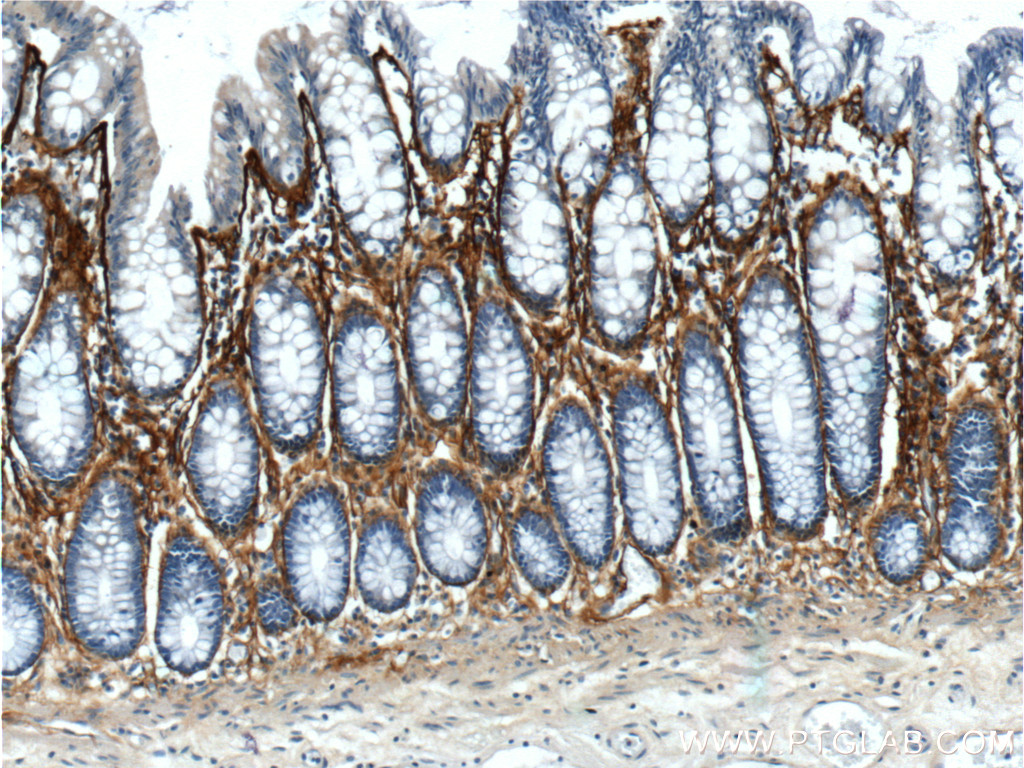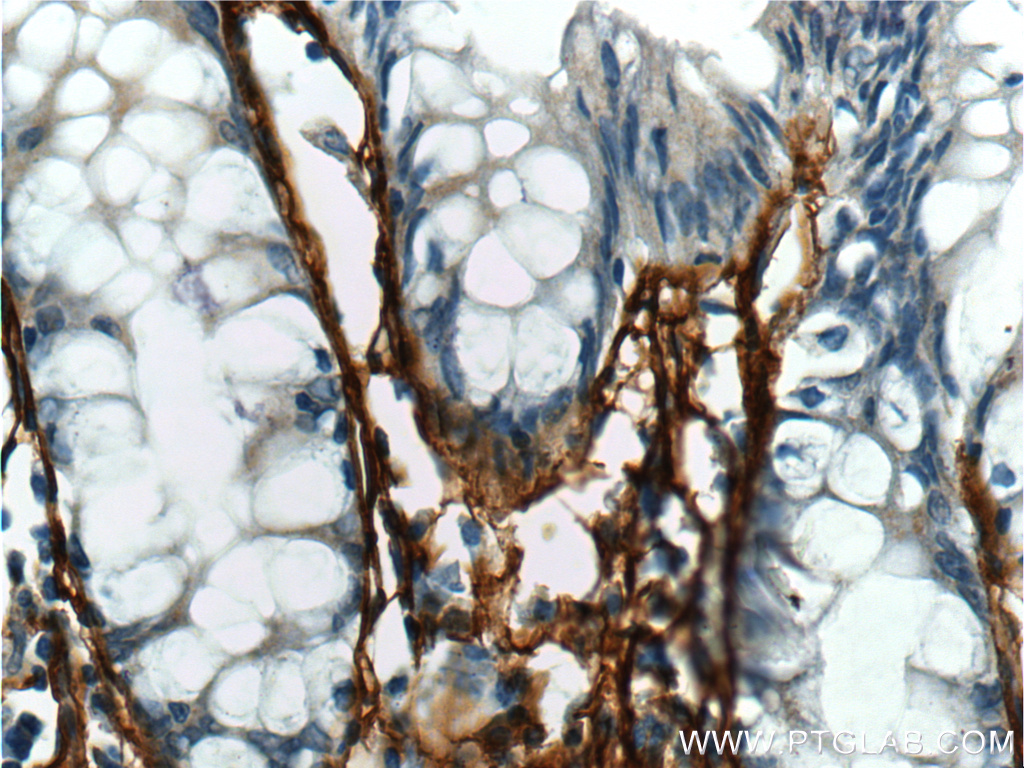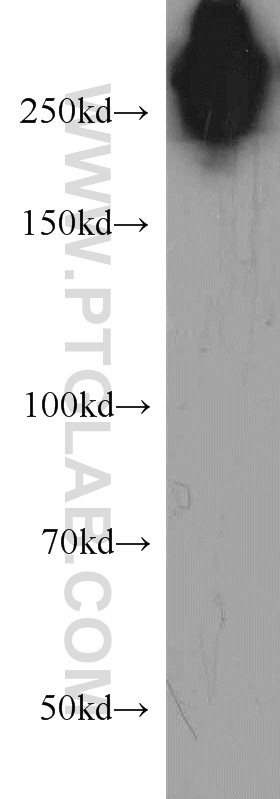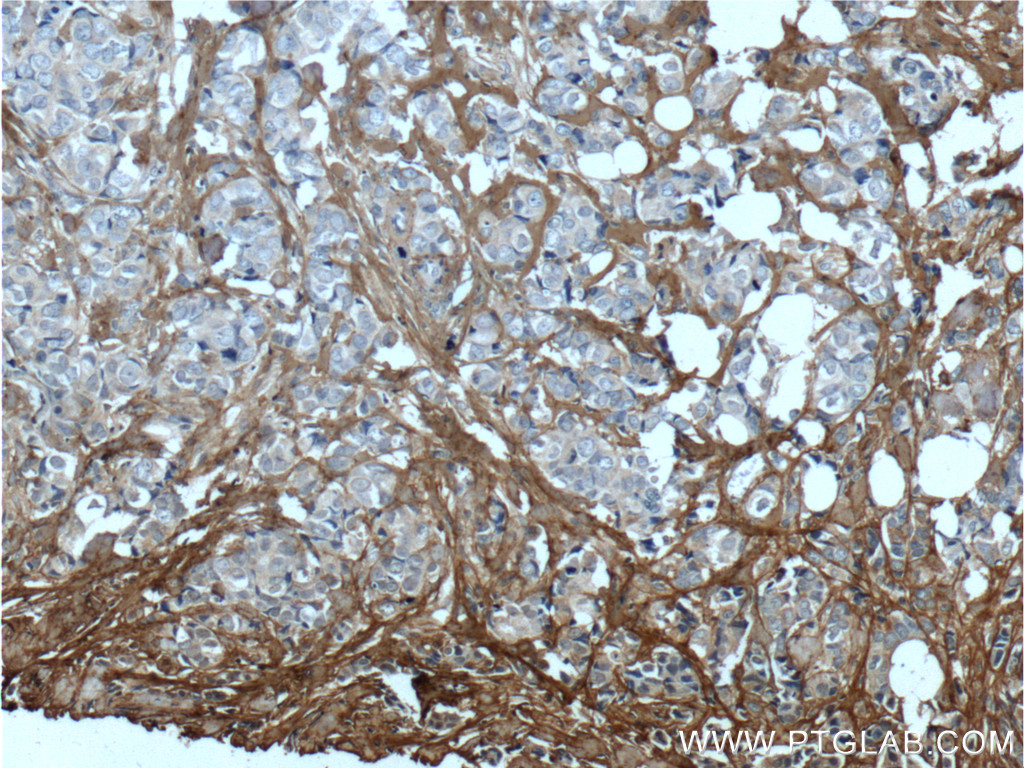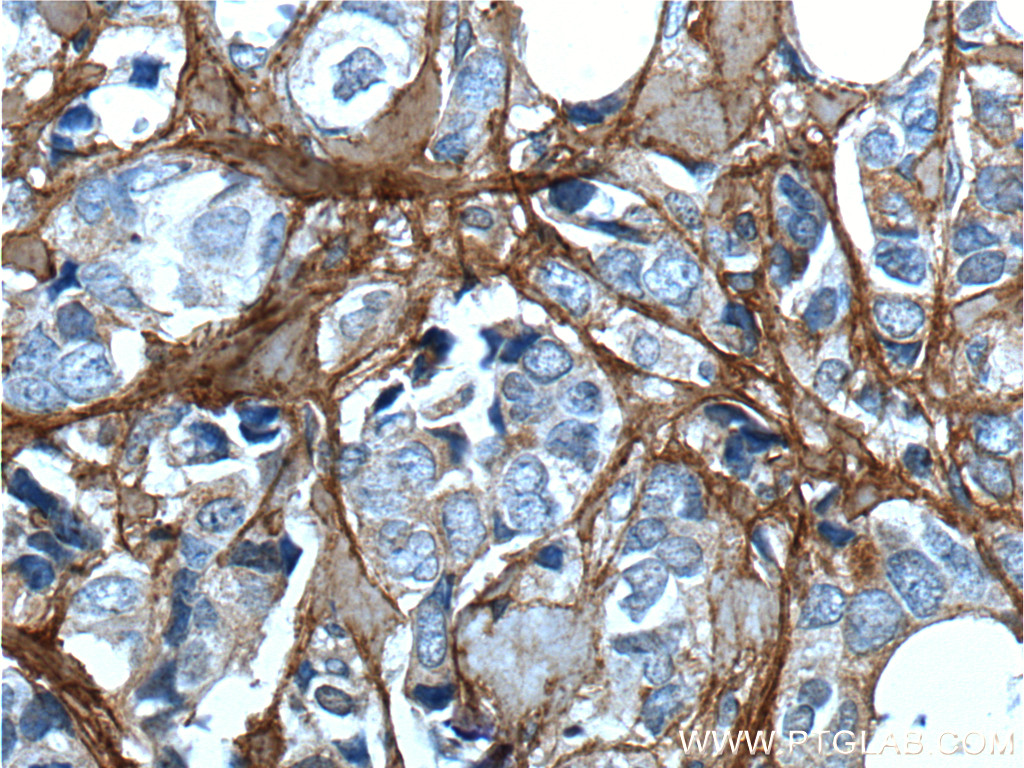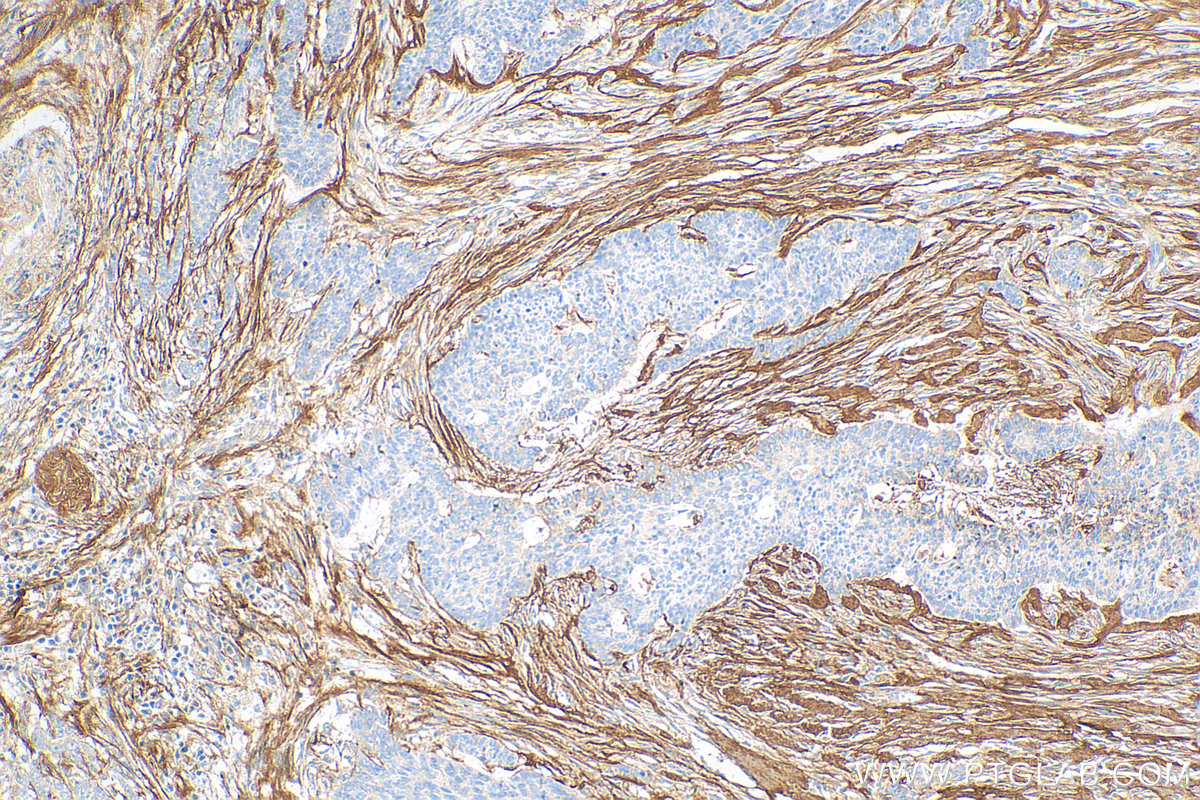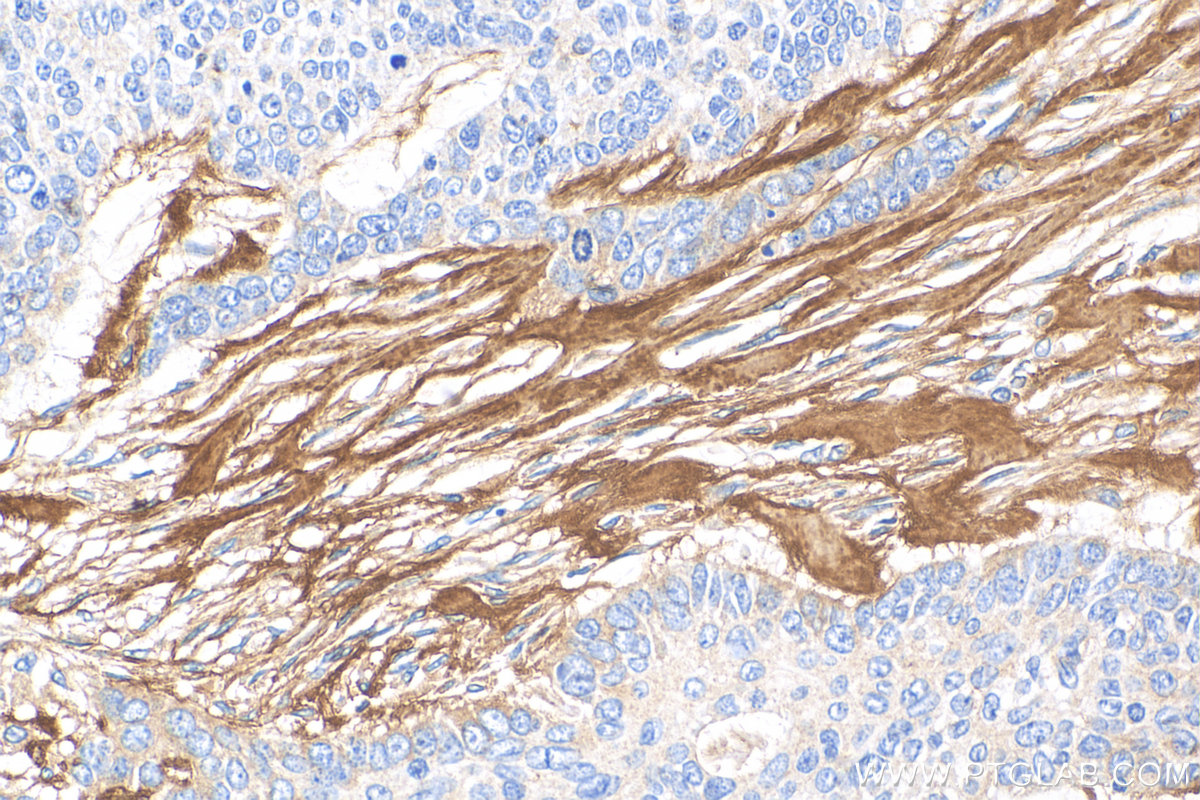- Featured Product
- KD/KO Validated
Periostin Polyclonal antibody
Periostin Polyclonal Antibody for IHC, ELISA
Host / Isotype
Rabbit / IgG
Reactivity
human, mouse, rat and More (1)
Applications
IHC, ELISA and More (1)
Conjugate
Unconjugated
验证数据展示
经过测试的应用
| Positive IHC detected in | human colon tissue, human breast cancer tissue, human skin cancer tissue Note: suggested antigen retrieval with TE buffer pH 9.0; (*) Alternatively, antigen retrieval may be performed with citrate buffer pH 6.0 |
推荐稀释比
| Application | Dilution |
|---|---|
| Immunohistochemistry (IHC) | IHC : 1:50-1:500 |
| It is recommended that this reagent should be titrated in each testing system to obtain optimal results. | |
| Sample-dependent, Check data in validation data gallery. | |
产品信息
19899-1-AP targets Periostin in IHC, IF, ELISA applications and shows reactivity with human, mouse, rat samples.
| Tested Applications | IHC, ELISA Application Description |
| Cited Applications | IHC, IF |
| Tested Reactivity | human, mouse, rat |
| Cited Reactivity | human, mouse, rat, zebrafish |
| Immunogen | Periostin fusion protein Ag13791 种属同源性预测 |
| Host / Isotype | Rabbit / IgG |
| Class | Polyclonal |
| Type | Antibody |
| Full Name | periostin, osteoblast specific factor |
| Synonyms | PDLPOSTN, Osteoblast-specific factor 2, Osteoblast specific factor 2, OSF-2, OSF2 |
| Calculated Molecular Weight | 93 kDa |
| GenBank Accession Number | BC106710 |
| Gene Symbol | Periostin |
| Gene ID (NCBI) | 10631 |
| RRID | AB_10732682 |
| Conjugate | Unconjugated |
| Form | Liquid |
| Purification Method | Antigen affinity purification |
| UNIPROT ID | Q15063 |
| Storage Buffer | PBS with 0.02% sodium azide and 50% glycerol pH 7.3. |
| Storage Conditions | Store at -20°C. Stable for one year after shipment. Aliquoting is unnecessary for -20oC storage. |
背景介绍
实验方案
| Product Specific Protocols | |
|---|---|
| IHC protocol for Periostin antibody 19899-1-AP | Download protocol |
| Standard Protocols | |
|---|---|
| Click here to view our Standard Protocols |
发表文章
| Species | Application | Title |
|---|---|---|
Clin Exp Hypertens Nuclear receptor subfamily 1 group D member 1 suppresses the proliferation, migration of adventitial fibroblasts, and vascular intimal hyperplasia via mammalian target of rapamycin complex 1/β-catenin pathway | ||
Matrix Biol Proteome-wide and matrisome-specific atlas of the human ovary computes fertility biomarker candidates and open the way for precision oncofertility. | ||
Antioxidants (Basel) MicroRNA-4732-3p Is Dysregulated in Breast Cancer Patients with Cardiotoxicity, and Its Therapeutic Delivery Protects the Heart from Doxorubicin-Induced Oxidative Stress in Rats | ||
J Nanobiotechnology Graphene quantum dots rescue angiogenic retinopathy via blocking STAT3/Periostin/ERK signaling. | ||
Cell Death Dis Periostin secreted by cancer-associated fibroblasts promotes cancer stemness in head and neck cancer by activating protein tyrosine kinase 7. | ||
Stem Cell Res Ther Adipose-derived stromal/stem cells are verified to be potential seed candidates for bio-root regeneration in three-dimensional culture. |
